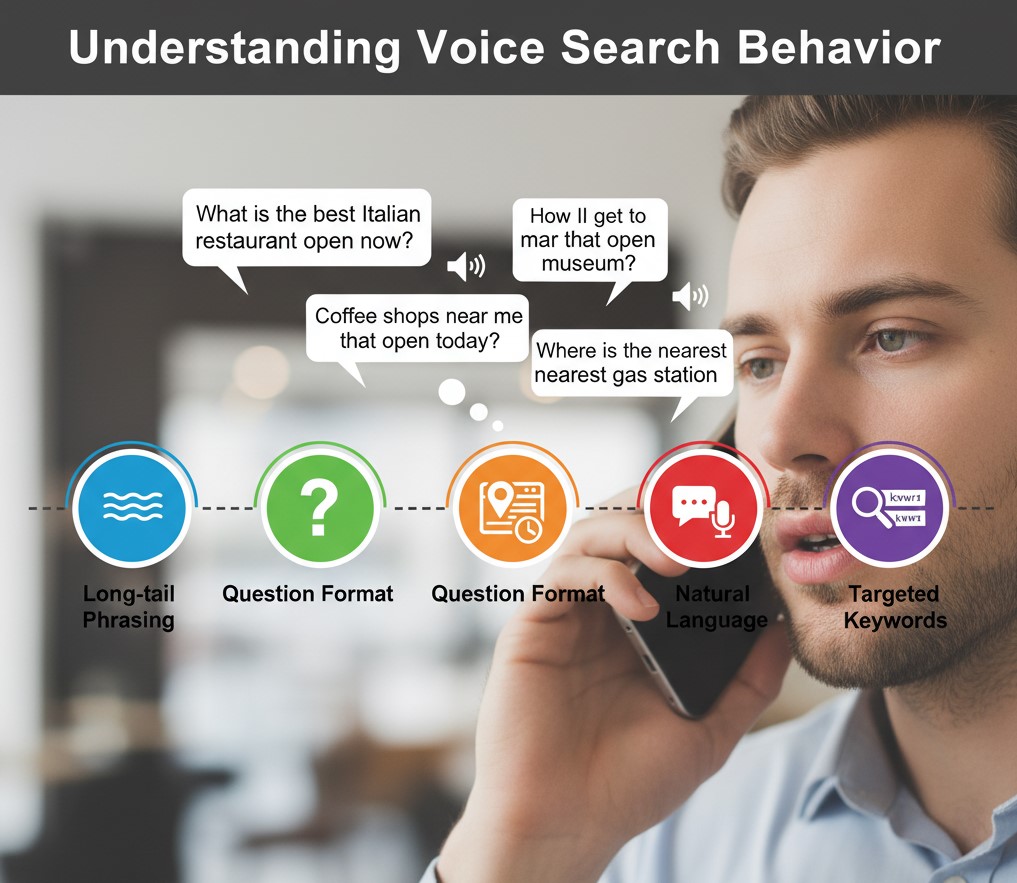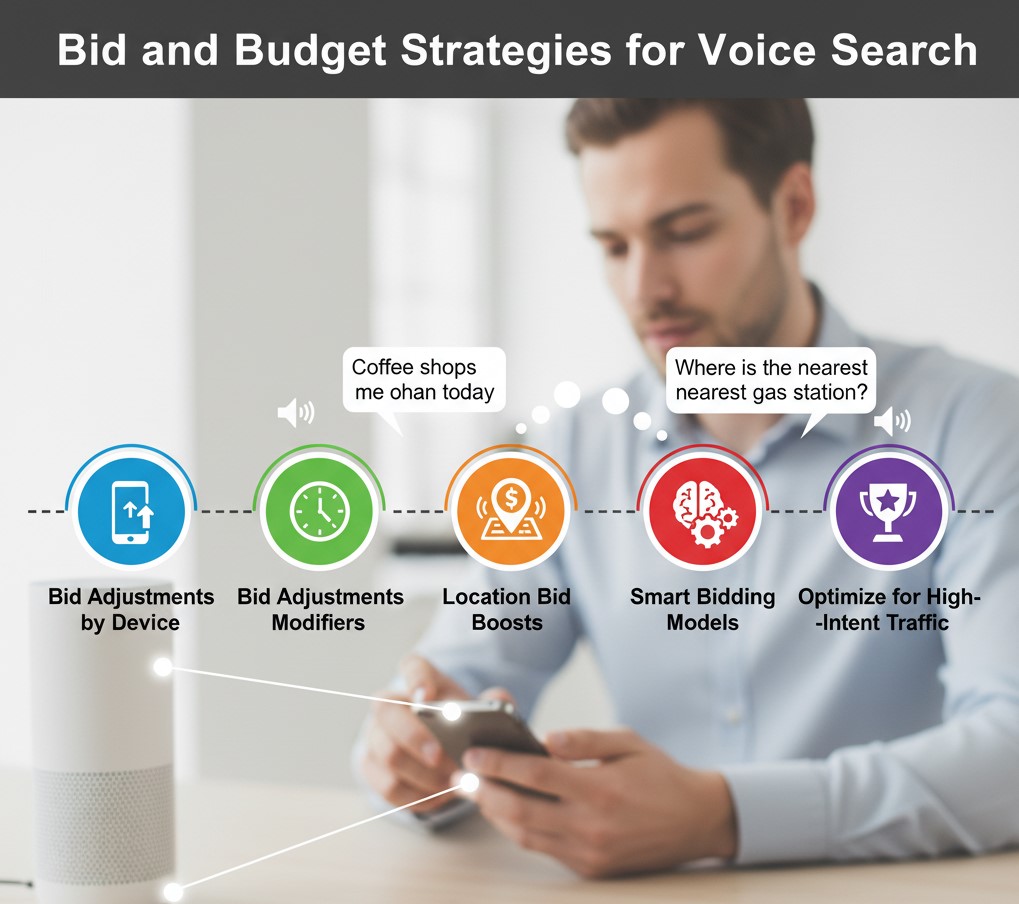
Voice search is reshaping how consumers discover products and services. As more users rely on smart speakers, mobile voice assistants, and in-car systems, search engine marketing (SEM) campaigns must evolve to capture these conversational queries. This guide provides actionable tactics to adapt your SEM strategy for voice search, from keyword research to bidding, ad copy, and analytics.
Why Voice Search Matters for SEM
Voice search now accounts for over 20% of mobile queries and continues to grow. Users ask questions naturally—“Where can I buy eco-friendly sneakers near me?”—reshaping keyword patterns and intent signals. By optimizing for voice search, advertisers can:
- Reach on-the-go audiences more effectively
- Improve click-through rates with highly relevant ad copy
- Gain an edge over competitors still focused solely on text-based SEM
Understanding Voice Search Behavior

Conversational queries differ from typed searches in several ways:
- Long-tail phrasing: Users speak full questions (e.g., “What is the best Italian restaurant open now?”).
- Question format: Queries often begin with who, what, where, when, why, and how.
- Local intent: Voice searches frequently include “near me” or time-sensitive terms like “open” or “today.”
- Natural language: The tone is more colloquial than text-based searches.
To succeed, SEM campaigns must mirror these patterns when selecting keywords and crafting ads.
Keyword Research for Voice Queries
Traditional keyword tools focus on short, typed phrases. Voice search demands a different approach:
- Identify question keywords: Use tools like AnswerThePublic, AlsoAsked, or Google’s People Also Ask to uncover common user questions in your niche.
- Include natural connectors: Add words like “how,” “best,” “near me,” “today,” etc., to reflect real speech.
- Leverage long-tail modifiers: Phrases of 4+ words often capture voice search intent.
- Filter by local intent: If your business is location-based, prioritize keywords with geo-modifiers.
- Group into themes: Organize queries into ad groups based on intent (e.g., informational, transactional, navigational).
Aim for a balanced mix of high-volume head terms and low-competition long-tails that reflect conversational syntax.
Crafting Conversational Ad Copy
Your ads should mirror the natural phrasing of voice queries to improve relevance and Quality Score.
- Use question headlines: Pose the query right in the headline (e.g., “Looking for Gluten-Free Pizza Near Me?”).
- Speak directly: Write as if you’re answering the user aloud, using contractions and a conversational tone.
- Highlight urgency: Incorporate time-sensitive wording like “open now,” “today only,” or “this weekend.”
- Include location references: If targeting a local audience, mention the city or neighborhood.
- Features & benefits: Clearly state how you solve the user’s problem (fast delivery, 24/7 support, etc.).
Landing Page Optimization for Voice Traffic
A seamless post-click experience is vital. Voice searchers expect immediate answers.
- Match the query intent: Ensure your landing page heading directly answers the voice query.
- Use conversational headers: Structure H1 and H2 tags with question-style text (e.g., “How to Order Dinner Delivery Now?”).
- Fast load speed: Mobile users using voice search expect instant results—optimize images, minimize scripts, and leverage caching.
- Clear CTAs: Use prominent, action-oriented buttons (“Order Now,” “Call Us Today”).
- Local schema markup: Implement
LocalBusinessschema to highlight address, hours, and phone number for voice assistants.
Bid and Budget Strategies for Voice Search

Voice search queries often convert at higher rates due to strong intent. Consider these tactics:
- Bid adjustments by device: Increase bids on mobile and smart speaker placements where voice search is prevalent.
- Time-of-day modifiers: Analyze peak voice search hours and adjust bids to capture live queries (e.g., lunch or commute times).
- Location bid boosts: For local businesses, boost bids within a defined radius of your physical storefront.
- Smart bidding models: Leverage Target CPA or Target ROAS to let machine learning optimize for high-intent voice traffic.
Tracking and Analytics for Voice SEM
Measuring voice search performance requires a layered approach:
- Segment voice traffic: Use UTM parameters or custom tracking templates to flag campaigns targeting voice keywords.
- Monitor query reports: Review Search Query Reports for question-style terms and adjust bids, keywords, and ad copy accordingly.
- Analyze call conversions: If phone calls are a key metric, implement call tracking numbers and measure call duration & outcome.
- Voice-specific goals: In Google Analytics, set up goals that align with voice user intent (e.g., store locator clicks, map directions, contact form submissions).
- A/B test continuously: Experiment with different question formats, CTA phrasing, and landing page layouts to optimize conversion rates.
Future Trends: AI & Multimodal Search
As voice assistants integrate AI, expect more personalized, context-aware results. Prepare by:
- Incorporating user signals (search history, location) into targeting
- Optimizing for multimodal experiences (voice + visual cards)
- Leveraging dynamic creative optimization to tailor ad content in real-time
Staying ahead means continuously refining your SEM strategy for evolving voice search behavior and technology.
Conclusion
Voice search is no longer a novelty—it’s a mainstream channel that demands specialized SEM tactics. By researching conversational keywords, crafting question-style ad copy, optimizing landing pages, and adjusting bids for voice-centric devices, you can capture high-intent traffic and drive measurable ROI. Implement the strategies in this guide to position your campaigns for success in the voice-driven future of search marketing.
Learn more about: Social Media Advertising: Your Complete Guide to Success


Leave a Reply